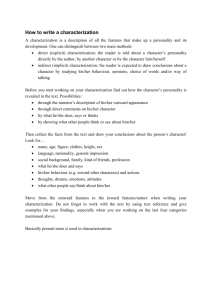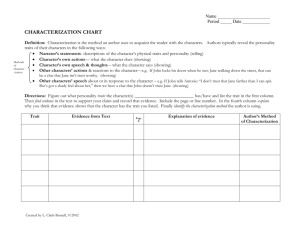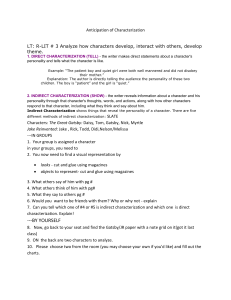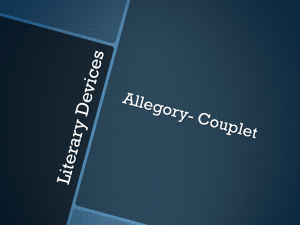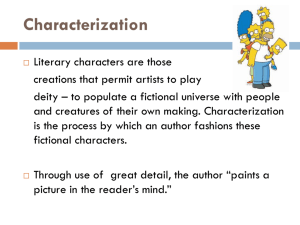Character and Characterization
advertisement
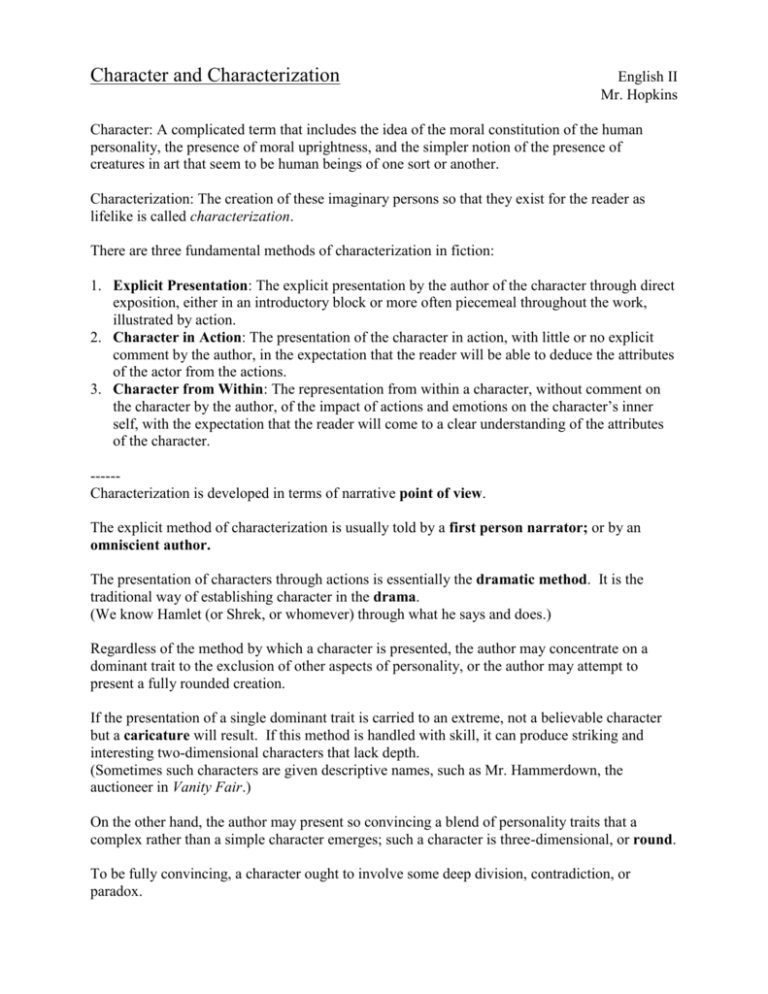
Character and Characterization English II Mr. Hopkins Character: A complicated term that includes the idea of the moral constitution of the human personality, the presence of moral uprightness, and the simpler notion of the presence of creatures in art that seem to be human beings of one sort or another. Characterization: The creation of these imaginary persons so that they exist for the reader as lifelike is called characterization. There are three fundamental methods of characterization in fiction: 1. Explicit Presentation: The explicit presentation by the author of the character through direct exposition, either in an introductory block or more often piecemeal throughout the work, illustrated by action. 2. Character in Action: The presentation of the character in action, with little or no explicit comment by the author, in the expectation that the reader will be able to deduce the attributes of the actor from the actions. 3. Character from Within: The representation from within a character, without comment on the character by the author, of the impact of actions and emotions on the character’s inner self, with the expectation that the reader will come to a clear understanding of the attributes of the character. -----Characterization is developed in terms of narrative point of view. The explicit method of characterization is usually told by a first person narrator; or by an omniscient author. The presentation of characters through actions is essentially the dramatic method. It is the traditional way of establishing character in the drama. (We know Hamlet (or Shrek, or whomever) through what he says and does.) Regardless of the method by which a character is presented, the author may concentrate on a dominant trait to the exclusion of other aspects of personality, or the author may attempt to present a fully rounded creation. If the presentation of a single dominant trait is carried to an extreme, not a believable character but a caricature will result. If this method is handled with skill, it can produce striking and interesting two-dimensional characters that lack depth. (Sometimes such characters are given descriptive names, such as Mr. Hammerdown, the auctioneer in Vanity Fair.) On the other hand, the author may present so convincing a blend of personality traits that a complex rather than a simple character emerges; such a character is three-dimensional, or round. To be fully convincing, a character ought to involve some deep division, contradiction, or paradox. -----Some human creatures portrayed in literature are hardly distinct characters at all but mere properties or furnishings; on the other hand, some nonhuman entities, such as animals, machines, houses, and cities, may function fully as characters. -----Characters may be either static or dynamic. Static: A static character is one who changes little if at all. Thing happen to such a character without things happening within. The pattern of action reveals the character rather than showing the character changing in response to the actions. Sometimes a static character gives the appearance of changing simply because our picture of the character is revealed bit by bit. Dynamic: A dynamic character is one who is modified by actions and experiences, and one objective of the work in which the character appears is to reveal the consequences of these actions. Most great dramas and novels have dynamic characters as protagonists. Short stories are more likely to reveal static characters through action than to show changes in dynamic characters resulting from actions. Ultimately every successful character represents a fusion of the universal and the particular and becomes an example of the concrete universal. It is in the dramatic particularization of the typical and universal that one of the essences of characterization is to be found. Our minds may delight in abstractions and ideas, but it is our emotions that ultimately give the aesthetic response, and they respond to the personal, the particular, the concrete.

